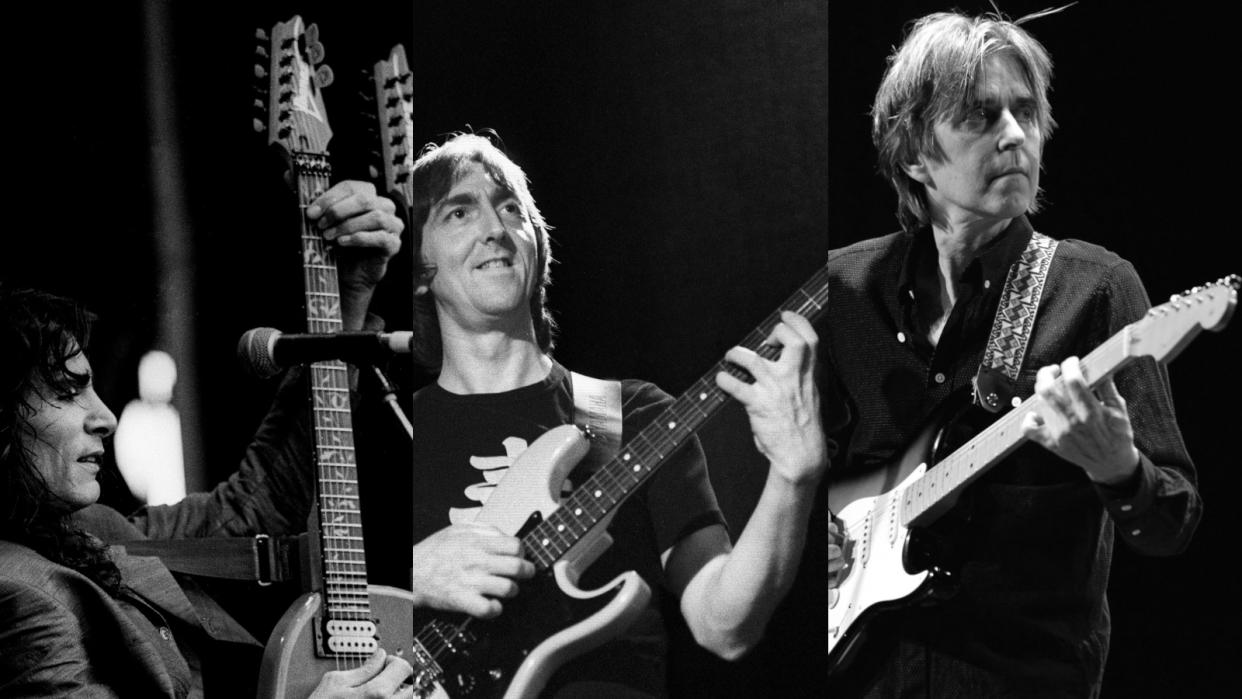Tap Into the Barre Chord Magic of Allan Holdsworth, Steve Vai and Eric Johnson Using This Five-Minute Lesson

Many guitarists know how to play barre chords, yet few tap into all of the magic a 1st-finger barre can offer.
Great players often use the 1st finger like a mobile capo, holding down two or more strings while the other three create riffs and chords.
Example 1 is a chordal shift in the style of Keith Richards, who has forged his own sound with 1st-finger barres. (Richards often uses an open-G tuning, but we’ve refigured the move for standard tuning.)
This is a good way to give a I–IV progression new teeth, and it sounds great with a dirty tone. Once you’ve got the lick nailed, try shifting it down the neck in whole steps.
Eric Johnson and Steve Vai like to revoice power chords by fretting the low root with the 3rd finger, as in Example 2. Sonically, these grips just seem to cut better, and they allow you to call in your second finger to fret low 7s, as in D5/C and C5/B.

Allan Holdsworth was widely known for his amazing solos, but he also possessed otherworldly comping chops.
Example 3 outlines a beautifully dissonant chord move in A minor that Holdsworth often played. The trick is to keep your 1st finger firmly planted for the duration of the phrase. (This one also sounds great over C major.)
By using a full barre, we can also outline entire chords. Example 4 is a Curtis Mayfield-approved phrase that sounds gorgeous over Fmaj7 or Dm9.
Aim for a flowing, graceful sound, being sure to allow the notes to ring together. To do this, place your index finger across the 10th fret, letting the 3rd and 4th fingers do the work.

For more barre-hopping adventures, check out Andrés Segovia’s Fernando Sor classical guitar arrangements, Allan Holdsworth’s book Reaching for the Uncommon Chord, or any Michael Hedges recording.
